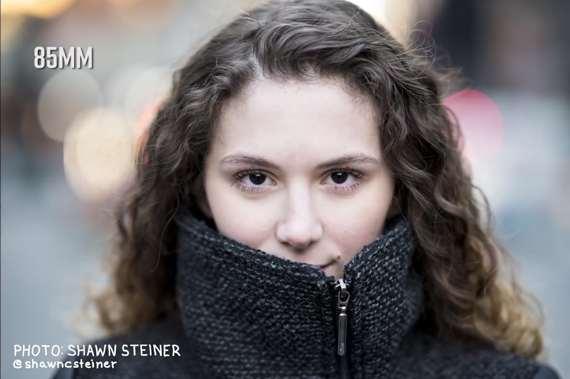Focal length is the distance between the optical center of a lens and the point where it converges a beam of light to form a sharp image. In photography, the focal length of the lens determines the field of view and the magnification of the subject. Understanding focal lengths and their uses can allow you to make more creative choices. Photographer David Flores from B&H takes us through popular focal lengths and how they can be used in the field:
Wide Angle
Wide angle lenses (14–35mm range) enable you to have a perspective that is wider than the angle of view of the human eye. Wide angle lenses are popular for photographing landscapes, architecture, group photos, and documentary work that requires lots of context.

Standard
Standard lenses (40–60mm range) have a perspective that is very close to what human eyes see. They’re versatile and are used for photographing a variety of subjects, such as portraits, travel, nature, or just about anything. Many standard lenses have a wide aperture, usually f/1.8, which make them very useful for low light conditions and getting a very shallow depth of field for a smooth background blur.

Telephoto
Telephoto lenses (70–800mm range) have the ability to zoom in to subjects that are far away. They’re mostly used for shooting wildlife, sports, nature, and portraiture. With their ability to have a reach on distant subjects, they allow the photographer to have some space between them and the subject. When a lens is used at the telephoto end, it compresses the foreground and background and isolates the subject. This is why many portrait photographers love to work with telephoto lenses.

Now that you have an understanding of the usage of focal lengths, you may have a dilemma of choosing whether you want to get a lens with a fixed focal length (a prime lens) or something with a variable focal length (a zoom lens).
Prime Lenses
Prime lenses have a fixed focal length, meaning that you cannot zoom in or out using the lens mechanism. It will have to be done by moving the camera closer or farther from the subject. The main advantage of a prime lens is that it can have a very wide maximum aperture, like f/1.2, f/1.4 and f/1.8.
Zoom Lenses
Zoom lenses have variable focal lengths and are more flexible. They’re more useful in the sense that you don’t need to continuously change lenses to zoom in or out. It is also important to note that some zoom lenses, especially kit lenses, have different maximum aperture sizes at the wide and telephoto ends. For instance, if you see that a zoom lens has 18–105mm 3.5-5.6 written on it, it means that when you are at 18mm, your maximum aperture can go up to f/3.5 while at the 105mm end, the aperture will be at f/5.6 at its widest.
The story of focal length doesn’t end there. The frame that is created by a particular focal length is again affected by the sensor size of your camera. Consider the following scenarios:
- On a full frame body, a 50mm lens will behave normally (i.e. all of the frame being created by the lens will fall on the sensor).
- On an APSC body, a 50mm lens will have an image frame that is slightly more zoomed in than the full frame body. Canon APSC sensor has a crop factor of 1.6, while others, like Nikon and Sony, have a crop factor of 1.5. This means that a 50mm lens on the Canon will have an image frame like that of an 80mm lens (50*1.6 = 80), while on a Nikon or Sony, it will have a frame like that of a 75mm lens (50*1.5).
- Even smaller sensors, like micro four thirds sensors, have a larger crop factor of two. In such bodies, a 50mm lens will form an image frame similar to that of a 100mm lens (50*2).
It is therefore necessary to consider your camera body and its sensor size when deciding on what focal lengths you want to use for your work.
Now that you have a better understanding of focal lengths, we hope that you’ll be able to make more informed creative lens choices.
Go to full article: Understanding Focal Lengths
What are your thoughts on this article? Join the discussion on Facebook
PictureCorrect subscribers can also learn more today with our #1 bestseller: The Photography Tutorial eBook
The post Understanding Focal Lengths appeared first on PictureCorrect.
from PictureCorrect https://ift.tt/2MyBnLn
via IFTTT






0 kommenttia:
Lähetä kommentti